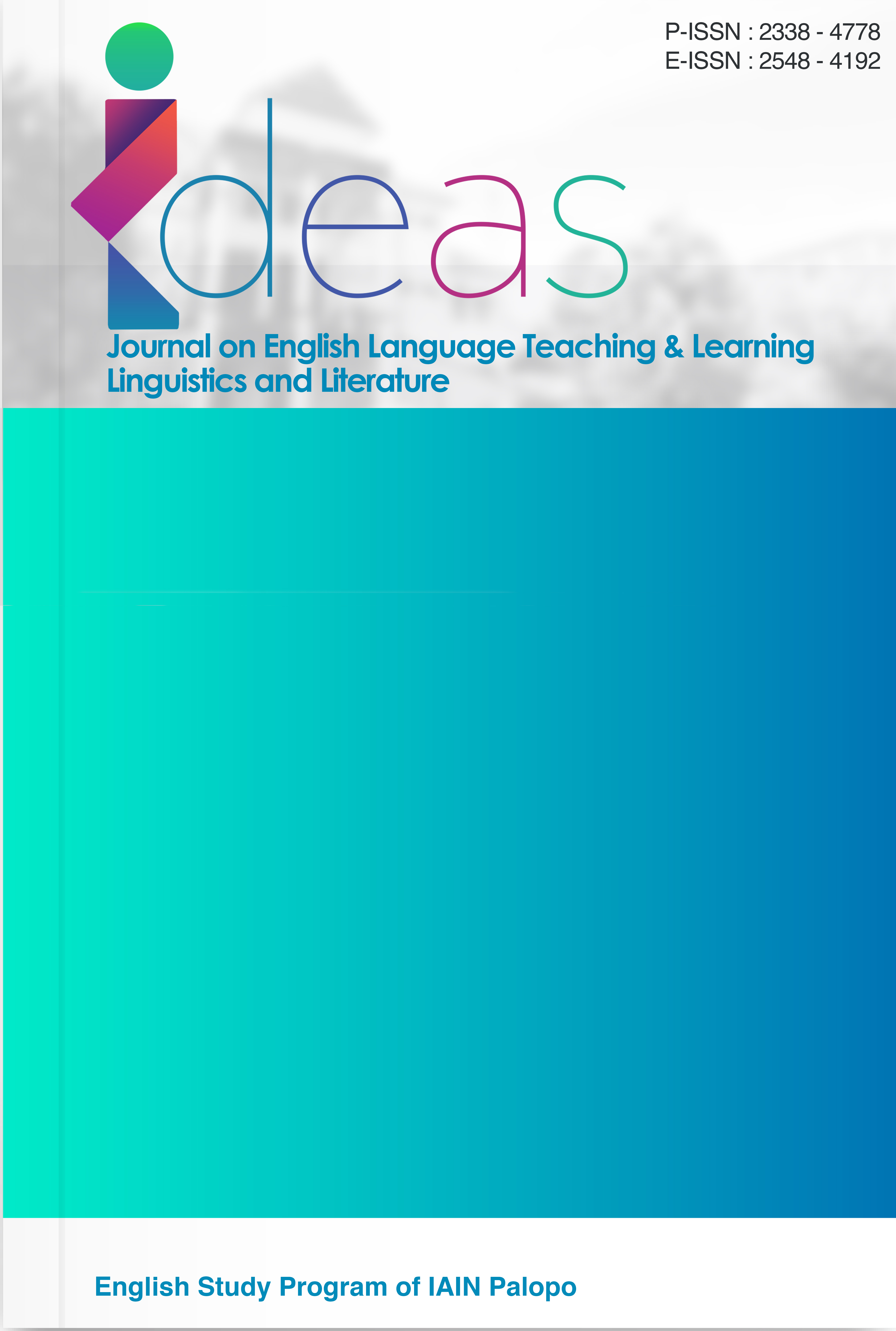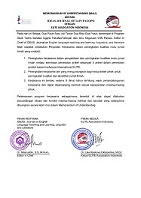Pre-service Teachers’ Perspective on the Use of Short Video Stories in Primary Education
DOI:
https://doi.org/10.24256/ideas.v13i2.6805Keywords:
efl pre-service teachers, short story videos, TPACK frameworkAbstract
This study examines a single pre-service teacher's perspective on using short story videos to teach English to primary school students, utilizing the Technological Pedagogical Content Knowledge (TPACK) model and a constructivist approach. Rather than relying on classroom observations, it emphasizes the teacher’s self-reported experiences and reflections to explore the integration of content knowledge, pedagogical strategies, and technological tools. Data were gathered through a semi-structured interview conducted during the participant’s teaching practicum in a fifth-grade classroom. The participant, a 24 years old undergraduate student in her final year, actively engaged in classroom instruction during her practicum and had completed relevant coursework in English language teaching. Findings indicate that short story videos were viewed as engaging and pedagogically valuable, although the integration across TPACK domains was inconsistent. While the participant maintained a positive attitude towards using video media, she encountered challenges related to technological confidence and the alignment of media with content. This study underscores that TPACK-based reflective interviews can yield valuable insights into the development of preservice teachers, even in the absence of direct classroom observation.
References
Apandi, Aneu Agnes Setiani, and Ratna Prasasti. 2024. “Using English Talk Show Videos on Youtube to Enhance Listening Skill: A Learners’ Voices.” Cirebon Annual Multidisciplinary International Conference (CAMIC) (Camic):33–38.
Bedilu, Woldemariam Bezabih, and Hailu Wubshet Degefu. 2024. “Assessing the Relationship between Teachers’ Perceptions and Their Classroom Practices and Challenges in Teaching English Vocabulary to Young Learners: The Case of Some Selected Primary Schools in Dawro Zone, SWRS, Ethiopia.” Cogent Education 11(1). doi:10.1080/2331186X.2024.2346039.
Braun, Virginia, and Victoria Clarke. 2006. “Using Thematic Analysis in Psychology.” Qualitative Research in Psychology 3(2):77–101. doi:10.1191/1478088706qp063oa.
Craswell, K. J. 1965. “Introduction to Probability and Statistics.” Technometrics 7(2). doi:10.1080/00401706.1965.10490258.
Dana, I. Kadek Wira, Putu Kerti Nitiasih, and Made Hery Santosa. 2023. “Developing Microlearning-Based English Video Materials for Junior High School in SMP PGRI 9 Denpasar.” IDEAS: Journal of Language Teaching and Learning Linguistics and Literature 11(2):1455–65. doi:10.24256/ideas. v11i2.4178.
Dewi, P., & Sari, D. (2022). Perception of Digital Storytelling in Overcoming Fear for Speaking English through Interdisciplinary Project of Gender Issues. IDEAS: Journal on English Language Teaching and Learning, Linguistics and Literature, 10(2), 1635 – 1642. doi:https://doi.org/10.24256/ideas.v10i2.2748
Khakim, Agi Khafidh Al, Farah Sukmawati Wahidah, and Agus Wirabhakti. 2024. “A Critical Review of Canva as a Visual Media Platform for English Learning.” Devotion: Journal of Research and Community Service 5(5):581–88. doi:10.59188/devotion. v5i5.731.
Masruddin. 2014. “The Importance of Using Technology in English Teaching and Learning.” Journal of English and Education 10:2–4.
Mishra, Punya, and Matthew J. Koehler. 2006. “Technological Pedagogical Content Knowledge: A Framework for Teacher Knowledge.” Teachers College Record: The Voice of Scholarship in Education 108(6):1017–54. doi:10.1177/016146810610800610.
Rustan, Nur Afifah, Bambang Yudi Cahyono, and Rusdiana Junaid. 2023. “Teachers’ Perspectives on Technology-Based Learning for the Kindergarten Students.” Journal of Education and Learning 17(3):374–81. doi:10.11591/edulearn. v17i3.20618.
Sidabutar, K. (2022). Grice's Types of Maxims in "Willoughbhys" Movie. IDEAS: Journal on English Language Teaching and Learning, Linguistics and Literature, 10(1), 326-337. doi:https://doi.org/10.24256/ideas.v10i1.2661
Tyas, N. (2022). Students' Perception on Self-Directed Learning (SDL) in Learning English by Using YouTube Videos. IDEAS: Journal on English Language Teaching and Learning, Linguistics and Literature, 10(2), 1307-1314. doi:https://doi.org/10.24256/ideas.v10i2.3208
Violita, V., & Cholsy, H. (2022). Speech Acts Equivalence of Audiovisual Translation on the Enola Holmes Netflix Movie Subtitle. IDEAS: Journal on English Language Teaching and Learning, Linguistics and Literature, 10(1), 209-225. doi:https://doi.org/10.24256/ideas.v10i1.2589
Zaier, Amani, and Faith Maina. 2022. “Assessing Preservice Teachers’ Perceptions and Practices to Differentiate Instruction for Culturally and Linguistically Diverse Students in Secondary Classrooms.” International Journal of Multicultural Education 24(2):1–16. doi:10.18251/ijme. v24i2.2473.
Downloads
Published
Issue
Section
Citation Check
License
Copyright (c) 2025 Ravenska Tiara Jessica, Putri Ananda, Nadia Wulandari

This work is licensed under a Creative Commons Attribution-ShareAlike 4.0 International License.
Authors retain copyright and grant the journal right of first publication with the work simultaneously licensed under an Attribution-ShareAlike 4.0 International (CC BY-SA 4.0) that allows others to share the work with an acknowledgement of the work's authorship and initial publication in this journal.
Authors are able to enter into separate, additional contractual arrangements for the non-exclusive distribution of the journal's published version of the work (e.g., post it to an institutional repository or publish it in a book), with an acknowledgement of its initial publication in this journal.
Authors are permitted and encouraged to post their work online (e.g., in institutional repositories or on their website) prior to and during the submission process, as it can lead to productive exchanges, as well as earlier and greater citation of published work (See the Effect of Open Access)




